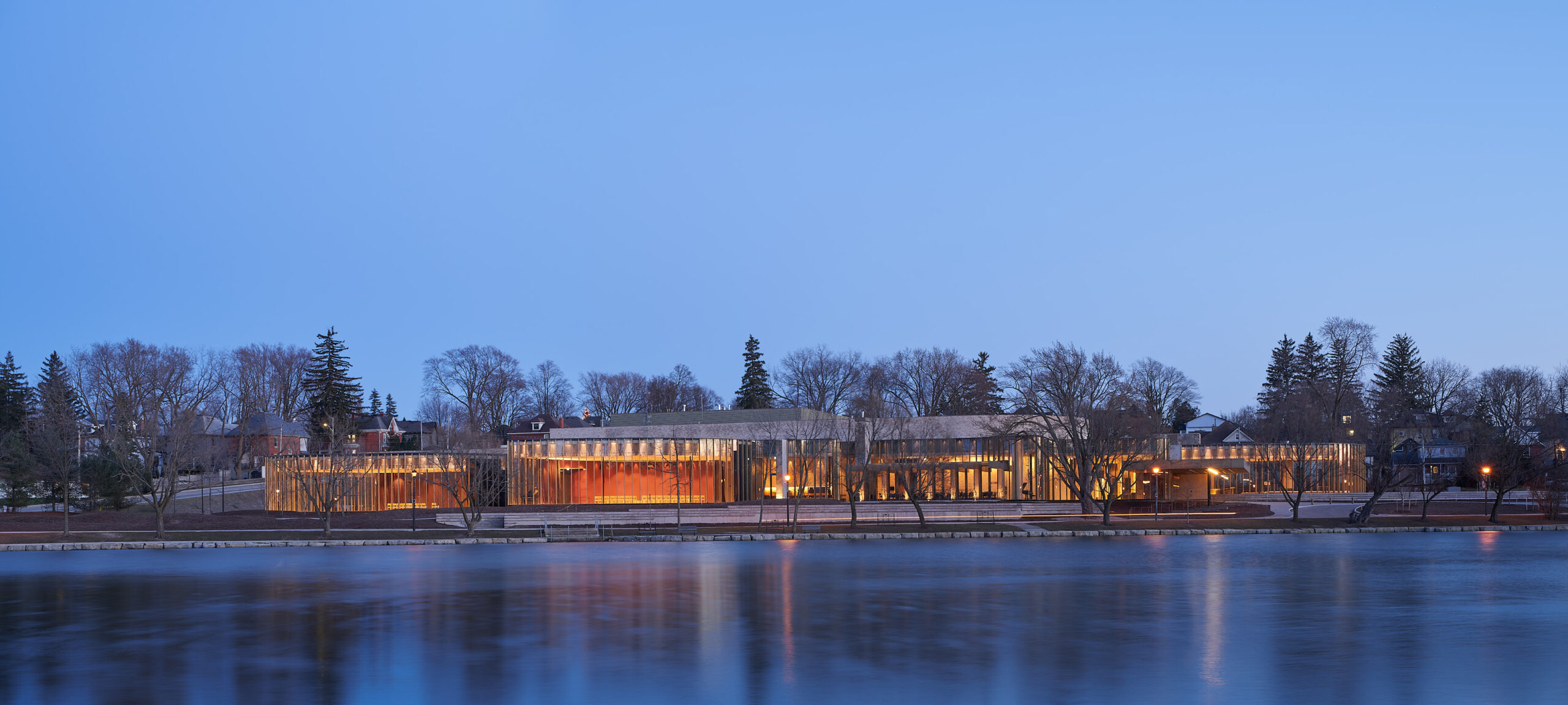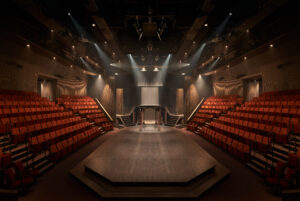
Going Rogue with Acoustic Design: How We Leveraged New Technology to Reimagine Stratford’s Tom Patterson Theatre
Once a quarter, on a Thursday afternoon, the Aercoustics team shuts down operations for 24 hours. No checking email or voicemails allowed. Everyone in the office is encouraged to work on any project and it does not have to be company-related. Our Rogue Days are meant to be an opportunity to innovate. Many have led to new tools and software, technology and solutions now used by our consulting engineering practice.
But even our Rogue Day expectations were exceeded with the creation of a tool that would help our team set precedence in acoustic design in a Canadian cultural landmark: The Tom Patterson Theatre (TPT). Set on the banks of the Avon River in Stratford, Ontario, the TPT hosts the annual Stratford Festival, which welcomes half a million theatregoers each year.
The Aercoustics team had the honour of working on the Festival’s first new performance venue in two decades. The TPT provides a state-of-the-art theatrical experience and replaces an older venue at the same location. Originally constructed within a repurposed curling rink in the 1960s, the previous theatre had cramped seating, limited backstage areas, no space for patrons to mingle before and after shows, and it was aging. The challenge was to keep the positive while fixing the negatives.
Setting Precedence in Acoustic Design
Working on this magnificent facility allowed our team to showcase our corporate values: “Innovate, Solve, Repeat”, “Respect the Science” and “Do the Impossible”. A lot of theatre design is based on previous experience. We learn from every project and bring that breadth of knowledge to each new design. But for TPT, there was no precedence, so we had to rely on the science and create the tools necessary to answer our scientific inquiries.
Traditional theatre design avoids the acoustical challenges of curved surfaces. Concave design could focus sound unevenly in the room, creating acoustic hotspots and resulting in poor acoustics. However, a large concave shell over the entire theatre was part of the initial design vision so we had to find a way to deliver optimal acoustics while preserving this aesthetic vision.
In addition, the theatre wall slats were a challenge because we had to be able to make parts of that curved wall reflective, and other parts acoustically absorptive.
Using Proprietary Tools to Push Acoustic Design
For the curved surfaces, we used an analytical tool designed during our Rogue Days. It lives inside Rhino, the same software architects often use for design. With this tool we discovered that parts of the curved surface would cause acoustic focusing, and other parts would provide a beneficial acoustic reflection for the audience section. Knowing this, we decided to make the focusing parts of the curve acoustically absorptive, and make the surface non-uniform to introduce some scattering of high frequency reflections.
This approach led us to the second challenge. The architect’s vision included a wood slat finish that lined the curved areas. Wood slats have been used extensively in our buildings as an aesthetically pleasing and acoustically absorptive material in the past. The difference here, is that the requirement for the slats was to be much deeper and closer to each other than typical off-the-shelf products. This meant we had to estimate the acoustic absorption qualities of the assembly from first principles instead of relying on manufacturer-tested data for a given depth to width combination.
Consequently, the second proprietary tool used was our wood slat acoustic absorption calculation tool. The opening size and the depth of the wooden slats on the wall were custom designed to allow enough sound to pass through them and be absorbed by the acoustic batt material directly behind them. There was no existing acoustic test data for reference, so we had to develop a very detailed calculation and modelling methodology to design the dimensions of those slats and ensure optimal sound.
Both proprietary tools allowed us to keep the main architectural vision of the hall intact, and have the architecture seamlessly integrate the acoustic design as well. Without such tools, the acoustic design would be much more conservative. The curves would not have been allowed. We would have highlighted the “risk of focusing” and pushed the design team to make the walls straight.
Without this technology and know-how, we would not have been able to balance the absorptive and reflective spots on the wooden slats and instead would have doubled the spacing between them “to be safe” which would impact the aesthetic design. The feeling of curvature would have been lost, ruining the vision for the project.
The easy way would be to say it can’t be done. Using our proprietary tools, we made it work. We can’t innovate in design if we push back and always do things the way we are used to.
Developing Tools for Future Projects
Some of the tools used have been in development for years. Others have been created and refined on this project. Every time we venture into new design spaces, we develop our tools further so we can use them in the future. The end goal is to integrate the acoustic needs of the space with the other elements (architectural, lighting, mechanical, etc.) so building designs can be elevated into more elegant and streamlined expressions of the vision for the space.
For the TPT, that goal was achieved, and international acclaim followed. TPT won the Best of the Best Award in cultural architecture from the Architecture Master Prize in Los Angeles, and it was the only project in Canada to win Britain’s Civic Trust which celebrates design excellence in the built environment.
Straying from traditional acoustic design takes a certain level of fearlessness and trust in our own abilities. We take tremendous pride in taking design steps that others would shy away from and leveraging new technology to take acoustic design where it has not gone before. For our team at Aercoustics, taking risks and innovating isn’t just a challenge for us; it’s a way for us to live out our corporate values.

